Welcome to binNotes: Meet the Winemaker
Like wine? Like witty, succinct stories about wine? You’ve landed on the right page!
Today’s Exclusive: Sam Weaver – Churton Wines
Marlborough, NZ
by L.M. Archer, FWS
Follow binNotes: | Twitter | Pinterest | Facebook | Pinterest
Ever wonder what those wild Kiwi winemakers do all day? Today, binNotes’ exclusive interview showcases bio-dynamic winemaker Sam Weaver of Churton Wines in New Zealand’s Marlborough region.
binNotes first encountered Sam Weaver at IPNC 2014, where we both attended the Distilling Terroir seminar. Sam had me at ‘biodynamic’ – a passion of mine. Microbiologist by training, wine seller by trade, Sam eventually segued into biodynamic wine making. Today Sam serves as the talented wine maker for Mount Beautiful Winery in New Zealand while stewarding his own family-owned, organically certified Churton Wines.
So grab a glass of wine and get cozy as binNotes talks terroir with Sam Weaver…
b/N: You started out in rural Britain farming, then as a wine buyer in London. Who or what brought you to wine making, to Marlborough, NZ, and to Churton?
SW: Though I was born in the UK my parents are New Zealanders. I studied microbiology at London University and through a rather circuitous route ended up in the London wine trade. It was great fun and I learned a tremendous amount about wine. I tasted and drank many classic wines from great vintages and bought wines on a commercial basis from small growers in Burgundy, the Loire and the Rhone. All this experience was very influential in my future wine making. At heart I’m a country boy and after 10 years in the wine trade and central London realized I wanted something different. I travelled to New Zealand to visit my parents and other relatives and was offered a vintage (harvest). In the end (1989) that morphed into an assistant winemaking job in Marlborough. Very early on I knew I wanted to make my own wine but I needed to accumulate enough wine making experience before embarking on that. We eventually established Churton in 1997.
b/N: Tell readers a bit about the history of Churton Wines – what makes it unique?
SW: When we started Churton we did so based on market demand. A UK wine merchant, Tanners Wines in Shropshire, approached me to supply Marlborough Sauvignon Blanc. We created Churton that first vintage for them in 1997. Very quickly we decided that to be serious we needed to do something different to the norm and all the “me to” brands that were appearing. That first wine was made from bought-in (purchased) fruit. We quickly decided we wanted control of our own fruit supply. We eventually found a fantastic site outside what was then considered a good growing area and started planting in 1999. We now have 22.5ha (1 hectare = 2.47 acres) planted on the most wonderful elevated site 200m above sea level. We planted the vineyard to principally Pinot Noir and Sauvignon Blanc with a small amount of Viognier and New Zealand’s first planting of Petit Manseng. As I had had all that European fine wine experience I took a much more European approach to the vineyard. The vines are close planted at nearly 5,000vines/ha. on rolling northeast-facing hillside slopes.
What makes us unique is that now all of our fruit comes from this exceptional site. At a high elevation with clay based soils and close vineyard planting, it produces fantastic fruit. There are now some other hillside vineyards ( 1-2% of the total are in Marlborough) but none, in my view, with the important easterly aspect. We set up the vineyard on the basis of minimal inputs with great care to integrate with the environment and have been running it bio-dynamically for the past 7 years. Biodynamics really is away of helping underline and express this unique place we call Churton.
Our basic premise is to capture the intensity of fruit aroma that are the hallmarks of Marlborough but to take these to another level where subtlety, depth, texture and length are paramount.
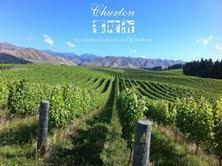
Churton Wines of Marlborough, NZ – a certified organic vineyard, practices bio-dynamic farming.
" data-orig-size="222,166" title="Churton" data-image-title="Churton" align="left" data-orig-file="http://binnotes.files.wordpress.com/2014/09/churton.jpg" style="width:425px; height:318px;" height="318" width="425" data-medium-file="http://binnotes.files.wordpress.com/2014/09/churton.jpg?w=222" data-original-height="318" alt="" data-original-width="425" data-image-meta="{"aperture":"0","credit":"","camera":"","caption":"","created_timestamp":"0","copyright":"","focal_length":"0","iso":"0","shutter_speed":"0","title":"","orientation":"0"}" data-large-file="http://binnotes.files.wordpress.com/2014/09/churton.jpg?w=222" />Churton Wines of Marlborough, NZ – a certified organic vineyard, practices bio-dynamic farming.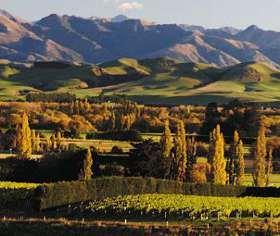
Mount Beautiful Winery grows award winning Riesling, up-and-coming Pinot Noir in Marlborough, NZ.
" data-orig-size="280,236" title="mtbwine.com" data-image-title="mtbwine.com" align="left" data-orig-file="http://binnotes.files.wordpress.com/2014/09/mtbwine-com.jpg" style="width:377px; height:318px;" height="318" width="377" data-medium-file="http://binnotes.files.wordpress.com/2014/09/mtbwine-com.jpg?w=280" data-original-height="318" alt="" data-original-width="377" data-image-meta="{"aperture":"0","credit":"Jason Carey","camera":"","caption":"","created_timestamp":"1300701451","copyright":"","focal_length":"0","iso":"0","shutter_speed":"0","title":"","orientation":"0"}" data-large-file="http://binnotes.files.wordpress.com/2014/09/mtbwine-com.jpg?w=280" />Mount Beautiful Winery grows award winning Riesling and up-and-coming Pinot Noir in Marlborough, NZ.b/N: You also consult for Mount Beautiful Winery in North Canterbury, NZ. How does wine making at Mount Beautiful differ from wine making at Churton?
SW: I guess both feed off each other and are the result of my collective experience, and so have many similarities. The primary difference, of course, is the fruit source and to some extent scale. Mount Beautiful is a great vineyard in its own right. It is a long way further south, so it a somewhat cooler harvest, and usually is about 2 weeks later than Churton. The vineyard is a much larger – currently 70ha. This scale necessitates a different approach. At Churton, we are biodynamic, so we hand-pick all of our fruit. Within 22.5ha, we have 19 different vineyard blocks. We are very detailed and meticulous. The size of Mount Beautiful means that it’s more difficult to run at that level of detail. Sauvignon Blanc is machine picked and treated a little more conventionally than Churton. The aim with Mount Beautiful is to make wines that are a little different to Marlborough wines but still produce strongly commercial New Zealand wines. At Churton, I simply let the vineyard speak!
b/N: You’re passionate about biodynamics. Tell readers a little bit about the path that led you to the practice of biodynamic farming in general, and at Churton specifically. What’s the most important thing folks need to know about biodynamic farming, and why it’s worth the investment?
SW: As I’ve mentioned, I come from a rural background. My feet are firmly entrenched in the soil and in agriculture. I also grew up in a very anti-establishment environment. This led me to question conventional approaches to almost everything! In the 80’s and early 90’s I studied wine very seriously in the UK I even wrote a paper on organic and biodynamic wine production. When I came to establish our vineyard I did it conventionally but with very minimal in put. We did no soil manipulations and simply planted in the old established pasture land. As the vines matured we changed to a completely organic based system. We’d always used elements of biodynamics: planting by the lunar calendar, making compost, etc. Taking the step to use the biodynamic preparations seemed logical. As we became more confident we were able to suspend our disbelief of some of the more unusual techniques and see whether they worked for us. Biodynamics is a journey not a result. The more we practice the more we understand and want to implement different ideas.
What is important to know about biodynamics is that it is not a dogma. Rudolf Steiner made suggestions and we are free to use elements of those suggestions and to evolve them in any way that will suit our farm.
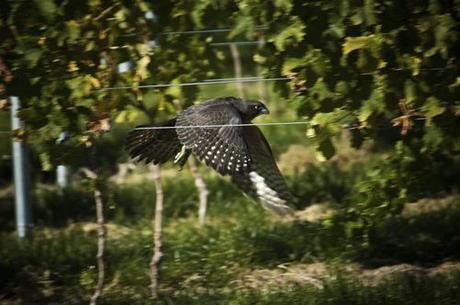
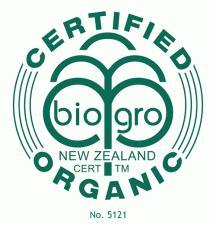
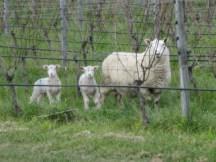
Biodynamics is not a religion. What makes it exciting is that it allows a strongly grounded approach which accepts and makes use of science but at the same time allows for a spiritual involvement with your land and farm.
As a microbiologist, biodynamics really helps focus us on enhancing the farms micro biome, the use of compost, the use of preparation 500 (cow horn manure), the plant and animal diversity; all this leads to a healthier microbial population. This healthy microbial population means vines have better access to water and nutrients. They have more disease resistance. The grapes that come to the winery have a healthy microbial bloom which means natural ferments are easier.
Biodynamics helps express terroir in all the ways above, but if you need any more evidence, look at Matt Goddard’s research work at Auckland university. He is a microbial ecologist and has studied yeast populations and species across conventional, organic and biodynamic vineyards in New Zealand. He has found that although all the vineyards studied have a wide range of species of yeasts, those that are biodynamic have greater populations and more diversity than any other type of viticulture. What’s more, at Churton we have unique yeasts that are only found here. They are not only found in the vineyard but also in indigenous yeast ferments in our wine.
Now that is really cool. Terroir and wine quality are clearly linked by their microbiology and that is emphasized by biodynamics!
b/N: How does your affinity for Burgundy influence your wines?
SW: Burgundy has always been my go-to wine. As a winemaker, I think that it’s essential to have icons. As you may have realized, I’m an idealist. At Churton we are not trying to create Burgundy, we are trying to make Churton. The two will never be the same. The importance of drinking widely and deeply is to help establish the vision for what you want to create in your own wine. For example one problem I see with many New Zealand pinots is that they are struggling with tannin structure. In Burgundy the tannins are very different – much more savoury and integrated, much more mature. This is a fascinating area and probably for me the real key to making great Pinot Noir. Churton’s tannins are very different to the New Zealand norm, and this is very much as a result of site, soil, water management and of course biodynamics. Recently one of our wines was analyzed for a panel of different tannin markers alongside some other very well known New Zealand pinots our wine stood out as have a very different structure to all the others which was great. As a winemaker I want my tannins to run through the mouth, I don’t want them to be separated spatially. I’m particularly critical of tannins that appear as a separate component and in one particular part of the mouth (e.g., front of mouth.)
I think you will see from the detail in our vineyard layout that Churton is very much about site and how we can maximize each different aspect within the vineyard. This approach leads us to produce fruit with evenness in ripening and mature tannins. As I’ve mentioned we work with our different climat and that attention to detail is what helps give us vins de terroir and that is a very European approach. Celebrating the differences in site rather than trying to make a homogenous whole is really what the Burgundians do well.
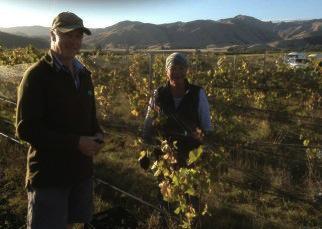
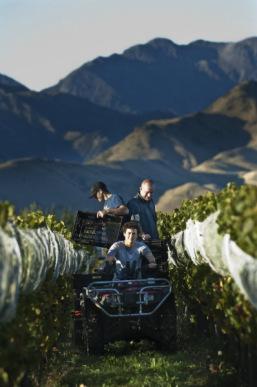
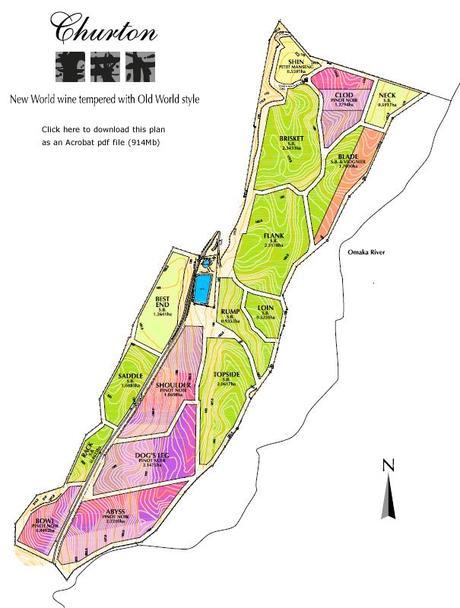
b/N: Churton is a family affair.Your son Ben did a recent vintage at Bonny Doon Vineyard in California- what was that like for him? Your other son, Jack, has worked in Europe. How have these experiences informed their contributions at Churton?
SW: Ben is currently in France working at another bio-dynamic producer, Chapoutier. He loves exploring different wine producers from the angle of biodynamics. Both Mandy and I actively encourage the boys to get a broad view of the world of wine. Ben came back from Bonny Doon Vineyard saying: “Dad our wines are too fruity we need to be more reductive in our winemaking.” That’s great that they can gain the confidence and ideas from elsewhere. It all contributes to the unique expression of Churton.
b/N: Your wife Mandy sits on the executive of OWNZ (Organic Winegrowers of New Zealand). Does OWNZ foresee a greater investment in organic farming in New Zealand in the future? More stringent requirements? Anything about New Zealand organic farming that may differ from other wine regions in the world?
SW: New Zealand is a fantastic place for organics. In Marlborough we are fortunate to have very little disease pressure so it’s a relatively easy conversion. OWNZ aims for 20% of New Zealand wine producers to be organic by 2020. Currently its slipped a little down from 9% a few years ago to I think 7% (we’ve had a few tough years that have taken some people out). There has been a lot of investment in the organic sector. We’ve just come to the end of a period of research across three viticultural areas looking at organic focus vineyards and comparing management and costs. In New Zealand, we have a scheme of Sustainable wine growing. OWNZ objective is to get Sustainable wine growing to accept organic accreditation and to allow people to move from the lowest entry level through to organic certification status within the one scheme.
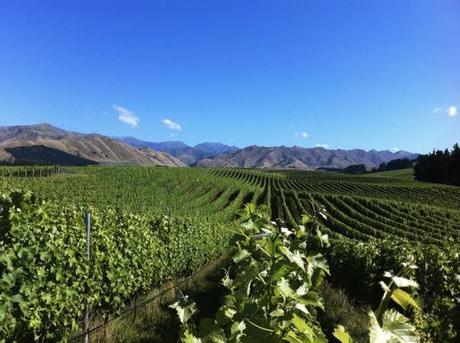
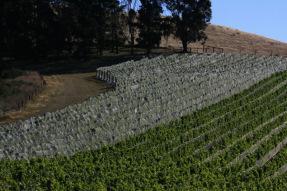

b/N: Tell readers a little bit about the unique qualities of Marlborough’s terroir in general, and Churton’s in particular, that impact the flavor profiles of the wines produced there.
SW: I’ve described the vineyard above: a high terrace mostly facing east and north. That east facing aspect is so important. Think of the Grand Crus in Burgundy. They almost all face east. The reason is that east facing slopes get the early morning sun. Morning sun is more beneficial than afternoon sun. Morning sun is cool but allows the vines to photosynthesis and if wet, to dry out quickly. Afternoon sun is hot and will dehydrate the vine and especially grapes as they are close to harvest. Hot afternoon sun will produce higher sugar through this dehydration but will not produce riper tannin. Cooler morning sun helps the vine have slower more even ripening, retains acidity and aroma. Our terroir delivers that, as well as its unique character and interaction between the soil and environment, and its unique microbiology.
b/N: Do you have a favorite varietal(s)? If so, which one(s), and why? What’s your ‘go-to’ wine from Churton? From Mount Beautiful?
SW: Churton has to be both Pinot Noir and Sauvignon Blanc – both unique in style to Marlborough and have exceptional texture. Mount Beautiful Riesling is consistently good; the Pinot Noir will follow with more vine age.
b/N: What are your greatest challenges at Churton? At Mount Beautiful?
SW: Churton is under-capitalized and as a consequence under-resourced in all sorts of ways, while Mount Beautiful doesn’t have those problems!
However, Mount Beautiful is an isolated vineyard a long way from other vineyards, so it’s difficult to get support. The Mount Beautiful vineyard is also a little frost prone, while Churton isn’t.
b/N: Finally, “If wine making has taught me anything, it’s taught me…”
SW: Treat the vineyard well with love and you can trust the fruit in your winemaking.
For more information:
Churton Wines | 941 Waihopai Valley Road, R D 6 Blenheim 7276, New Zealand | [email protected]
Care to share? Leave your comments below.
Cheers!
⚜⚜⚜
Thank you:
Sam Weaver & Family – Churton Wines
Follow binNotes: | Twitter | Pinterest | Facebook
Copyrighted 2012-2014. All Rights Reserved.

